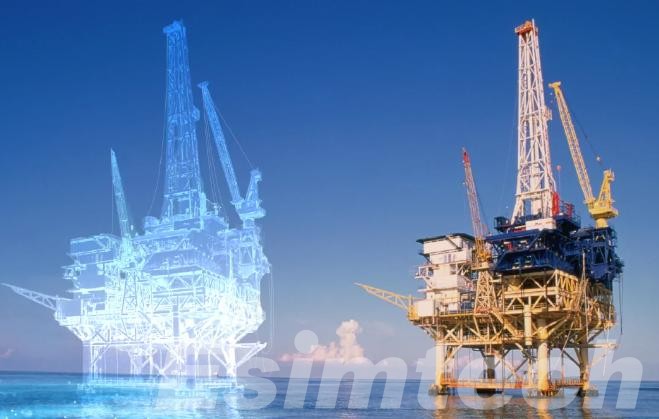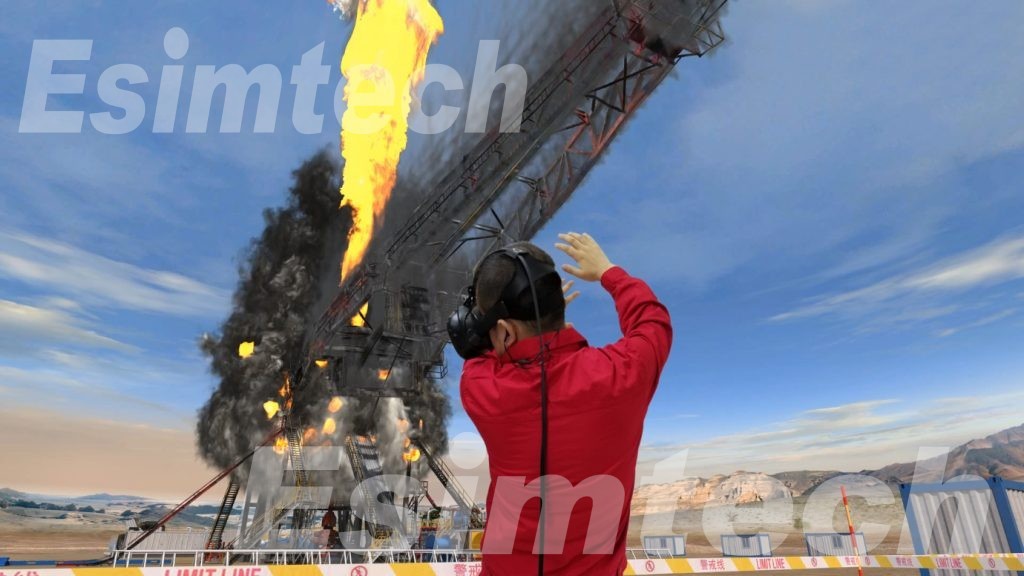The Role of Digital Twin Technology in FPSO Performance Optimization
In the fast-evolving offshore oil and gas industry, Floating Production, Storage, and Offloading (FPSO) units are essential for maximizing resource extraction in deepwater and remote locations. As these operations become increasingly complex, there is a growing need for advanced technologies that enhance efficiency, safety, and cost-effectiveness. One such innovative technology gaining considerable attention is Digital Twin Technology. This article examines how Digital Twin technology is optimizing FPSO performance, exploring its key benefits and applications in offshore operations.
What are FPSO Operations?

FPSO (Floating Production, Storage, and Offloading) units are specialized vessels used in the offshore oil and gas industry. These floating platforms are engineered to process, store, and offload hydrocarbons in deepwater and remote areas where traditional land-based infrastructure is not practical. FPSOs are crucial to the production process, especially in challenging environments like deep-sea oil fields.
Key aspects of FPSO operations include:
- Production: FPSOs are equipped with facilities for extracting oil and gas from underwater reservoirs. This often involves subsea systems that transport raw hydrocarbons to the platform for processing.
- Processing: Once extracted, the oil and gas are processed onboard to separate water, gas, and other impurities. This ensures that only the highest quality product is stored and transported.
- Storage: The processed oil is stored in large tanks within the FPSO. These storage tanks are capable of holding millions of barrels of crude oil, allowing the platform to operate independently for extended periods without needing to offload frequently.
- Offloading: After storage, the FPSO offloads the processed oil to shuttle tankers or pipelines for transportation to refineries. Offloading is typically done via a buoy system or other specialized methods to ensure safe and efficient transfer.
- Maintenance and Operations: Continuous maintenance and monitoring are essential for the smooth functioning of FPSOs. Regular checks on equipment, systems, and safety protocols are necessary to ensure both optimal production and safety at sea.
FPSOs are critical for offshore oil and gas operations because they combine multiple functions, reducing the need for complex infrastructure and ensuring that production can continue in remote locations.
What is Digital Twin Technology?

Digital Twin Technology involves creating a virtual replica of a physical asset or system, enabling real-time monitoring, simulation, and performance analysis. This dynamic model mirrors its physical counterpart by integrating data from sensors, operational logs, and other sources. The digital twin continuously updates to reflect real-time conditions and behaviors of the physical asset, allowing operators to monitor performance, predict potential issues, and test modifications without impacting the actual system.
In FPSO operations, a Digital Twin would be a detailed virtual model of the entire unit, including its production, storage, and offloading systems, as well as the structural components. It provides operators with an in-depth understanding of how the FPSO is functioning, enabling better decision-making, proactive maintenance, and performance optimization. By simulating different scenarios, a Digital Twin also helps identify inefficiencies, prevent breakdowns, and improve overall operations.
Application of Digital Twins in FPSO Operations

Digital Twin technology can revolutionize FPSO operations by enhancing efficiency, reducing costs, and improving safety. Below are the three most significant applications of Digital Twin technology in FPSO operations, explained in detail:
Performance Monitoring and Optimization
- Real-time Data Integration: A Digital Twin creates an up-to-date digital replica of the FPSO unit, continuously collecting data from embedded sensors within the physical system. This data includes critical parameters such as temperature, pressure, flow rates, and machinery performance.
- Predictive Analytics: By integrating real-time data, the Digital Twin can forecast future performance trends, identifying potential inefficiencies or issues before they arise. By modeling various operational scenarios, it aids in optimizing production and reducing energy consumption.
- System-level Optimization: The virtual model enables operators to simulate and adjust operational parameters across multiple systems (e.g., production, storage, and power generation) to determine the most efficient configurations without disrupting physical operations. This leads to smoother, more efficient operations and minimized downtime.
Simulation and Training

- Virtual Training Environment: The Digital Twin serves as a highly realistic simulation tool for training FPSO personnel. Trainees can interact with the digital replica of the FPSO, practicing tasks such as emergency response, equipment operation, and troubleshooting, without the risks associated with on-site training.
- Scenario-based Learning: The digital model allows trainers to simulate a wide range of scenarios, from routine operational procedures to rare but critical situations. This helps employees gain practical experience in handling complex systems and makes them better prepared for real-life challenges.
- Reduced Operational Risk: By offering a hands-on, immersive learning experience, Digital Twins reduce the likelihood of human error in actual operations. Operators are better equipped to make quick, informed decisions under pressure, ensuring the safety and efficiency of FPSO operations.
Predictive Maintenance and Risk Management
- Condition-Based Monitoring: Digital Twins track the health of critical equipment like pumps, compressors, and turbines by analyzing data from sensors and historical performance. This enables early detection of wear and tear, allowing for timely intervention before a failure occurs.
- Failure Prediction: Through advanced machine learning algorithms, the Digital Twin can forecast the remaining useful life (RUL) of key components. This allows operators to schedule maintenance just in time, avoiding the need for fixed schedules or reactive repairs.
- Emergency Scenario Simulation: A key advantage of Digital Twin technology is its ability to simulate emergency scenarios, such as equipment failure, fires, or gas leaks. Operators can use these simulations to train staff and optimize emergency response protocols, enhancing safety and minimizing the impact of such incidents on operations.

Key Benefits of Digital Twin Implementation in FPSOs
The implementation of Digital Twin technology in FPSO operations offers several key benefits, which can be summarized as follows:
| Benefit | Description |
| Enhanced Operational Efficiency | Real-time monitoring and optimization of systems to minimize downtime and maximize output. |
| Cost Savings | Predictive maintenance, energy optimization, and extended equipment lifespan reduce operational costs. |
| Improved Safety | Simulations of hazardous scenarios help identify risks and improve safety protocols, reducing accidents. |
| Data-Driven Decision Making | Real-time insights and predictive analytics support informed decision-making across all operations. |
| Increased Lifespan of Assets | Continuous monitoring helps extend equipment life and reduce the frequency of costly repairs and replacements. |
| Compliance and Sustainability | Ensures regulatory compliance, reduces environmental impact, and supports sustainability initiatives. |
These benefits highlight how Digital Twin technology can significantly improve the performance, safety, and sustainability of FPSOs.
Conclusion
Digital Twin technology has the potential to transform FPSO operations by providing real-time monitoring, predictive analytics, and simulation capabilities. It enhances efficiency, safety, and cost-effectiveness, helping operators maximize production, reduce risks, and ensure sustainability. As the offshore industry evolves, adopting Digital Twin technology will be crucial for optimizing FPSO performance in the years ahead.
